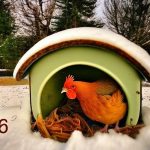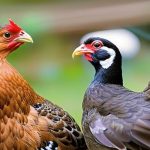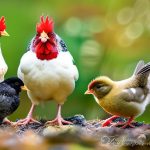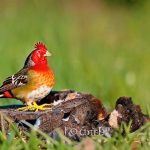Bird flu, or avian influenza, is a highly infectious viral disease primarily affecting birds. Some strains can infect humans and other animals, with H5N1 being the most common strain affecting humans. Transmission to humans occurs through direct contact with infected birds, their droppings, or consumption of contaminated poultry products.
In humans, bird flu can cause severe respiratory illness and potentially lead to serious complications or death. Symptoms in birds vary but often include respiratory distress, decreased egg production, and sudden death. The virus can spread rapidly among bird populations, causing significant economic losses for poultry farmers.
Not all bird flu strains pose equal danger to humans, and infection risk depends on factors such as the specific strain and exposure level. Understanding bird flu’s nature and its potential impact on both birds and humans is essential for implementing effective prevention and control measures.
Table of Contents
- 1 Implementing Biosecurity Measures
- 2 Vaccination and Testing
- 3 Proper Waste Management
- 4 Monitoring Wild Birds
- 5 Quarantine and Isolation
- 6 Seeking Professional Advice
- 7 FAQs
- 7.1 What is bird flu?
- 7.2 How can bird flu affect my chickens?
- 7.3 How can I keep bird flu away from my chickens?
- 7.4 What is biosecurity and how can it help prevent bird flu?
- 7.5 Are there any vaccines available to protect chickens from bird flu?
- 7.6 What should I do if I suspect bird flu in my chickens?
Key Takeaways
- Bird flu is a highly contagious viral disease that can affect both domestic and wild birds, as well as humans.
- Biosecurity measures such as controlling access to poultry farms and disinfecting equipment are crucial in preventing the spread of bird flu.
- Vaccination and regular testing of birds can help in early detection and prevention of bird flu outbreaks.
- Proper waste management, including the safe disposal of dead birds, is essential in controlling the spread of the virus.
- Monitoring wild birds for signs of bird flu can help in early detection and containment of the disease.
- Quarantine and isolation of infected birds are important to prevent the spread of bird flu to other birds.
- Seeking professional advice from veterinarians and public health authorities is crucial in developing and implementing effective bird flu prevention and control measures.
Implementing Biosecurity Measures
Hygiene Practices and Access Control
Strict hygiene practices, such as regular handwashing and disinfection of equipment and facilities, are essential in preventing the spread of bird flu. Controlling access to poultry farms and implementing measures to prevent contact between wild birds and domestic poultry can also help reduce the risk of introducing the virus to farm environments.
Physical Barriers and Biosecurity Protocols
Physical barriers such as fences and netting can be used to prevent contact between wild birds and domestic poultry. Additionally, implementing strict biosecurity protocols for farm workers and visitors, including the use of protective clothing and footwear, can help prevent the introduction and spread of bird flu.
Monitoring and Controlling the Movement of Poultry and Products
It is also important to monitor and control the movement of poultry and poultry products, as well as to implement measures to prevent the spread of the virus through contaminated feed and water sources. By implementing comprehensive biosecurity measures, poultry farmers can significantly reduce the risk of bird flu outbreaks on their farms and protect both their birds and the wider community from the potential consequences of the disease.
Vaccination and Testing
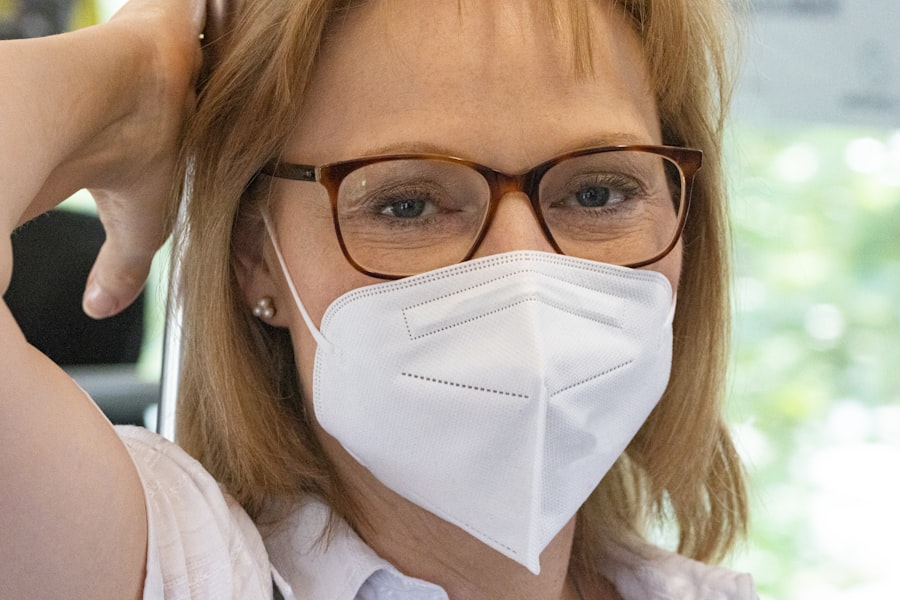
Vaccination is an important tool for preventing bird flu in poultry populations. Vaccines are available for certain strains of the virus, and their use can help reduce the severity of outbreaks and limit the spread of the disease within bird populations. Regular testing for bird flu is also crucial for early detection and containment of the virus.
This involves routine surveillance of poultry flocks for signs of infection, as well as testing of sick or dead birds to confirm the presence of the virus. In addition to regular testing, it is important for poultry farmers to work closely with veterinary professionals to develop vaccination strategies that are tailored to their specific farm environments and production systems. This may involve implementing a combination of vaccination and testing protocols to ensure comprehensive protection against bird flu.
By staying informed about the latest developments in bird flu vaccines and testing methods, poultry farmers can take proactive steps to safeguard their flocks and minimize the risk of disease transmission.
Proper Waste Management
Proper waste management is essential for preventing the spread of bird flu within and beyond poultry farms. This includes safe disposal of dead birds, as well as effective management of manure and other waste products. Dead birds should be promptly removed from farm premises and disposed of in a manner that prevents scavenging by wild birds or other animals.
This may involve burial or incineration of carcasses in accordance with local regulations. Manure management is also critical for preventing the spread of bird flu, as the virus can survive in contaminated feces for extended periods. Poultry farmers should implement measures to safely store, handle, and dispose of manure to minimize the risk of disease transmission.
This may include composting manure to accelerate decomposition and reduce the viability of any pathogens present. By implementing proper waste management practices, poultry farmers can help reduce the risk of bird flu outbreaks on their farms and protect the surrounding environment from contamination.
Monitoring Wild Birds
Wild birds are natural reservoirs for avian influenza viruses, and their movements can contribute to the spread of the disease to domestic poultry populations. Monitoring wild bird populations for signs of avian influenza is therefore an important component of disease prevention and control efforts. This may involve regular surveillance of wild bird habitats, including wetlands and migratory pathways, to detect any unusual mortality or signs of illness in wild bird populations.
In addition to monitoring wild birds for signs of avian influenza, it is important for poultry farmers to take steps to minimize contact between wild birds and domestic poultry. This may involve implementing physical barriers such as netting or fencing to prevent wild birds from accessing poultry facilities, as well as minimizing opportunities for wild birds to come into contact with feed and water sources on farms. By monitoring wild bird populations and taking proactive measures to reduce contact with domestic poultry, farmers can help minimize the risk of introducing avian influenza to their flocks.
Quarantine and Isolation

Isolating Affected Birds
In the event of a suspected or confirmed outbreak, affected birds should be promptly isolated from healthy flocks to prevent further transmission of the virus. This may involve separating sick or exposed birds from healthy individuals within a single facility, or in some cases, moving affected birds to a separate quarantine area on the farm.
Quarantine Measures for New Arrivals
In addition to isolating affected birds, it is important for poultry farmers to implement quarantine measures for new arrivals to their farms. This may involve keeping newly acquired birds separate from existing flocks for a period of time to monitor for signs of illness before allowing them to mix with other birds.
Preventing the Spread of Bird Flu
By implementing strict quarantine and isolation protocols, farmers can help prevent the spread of bird flu within their flocks and reduce the risk of introducing the virus to their farms.
Seeking Professional Advice
Seeking professional advice from veterinary professionals and public health authorities is essential for developing effective strategies to prevent and control bird flu on poultry farms. Veterinary professionals can provide valuable guidance on biosecurity measures, vaccination protocols, testing strategies, and disease management practices tailored to specific farm environments. They can also offer support for early detection and response to suspected outbreaks, as well as guidance on safe disposal of infected materials.
In addition to working with veterinary professionals, poultry farmers should stay informed about local regulations and guidelines related to bird flu prevention and control. Public health authorities may provide valuable resources and information on best practices for disease prevention, as well as guidance on reporting suspected cases of avian influenza. By seeking professional advice and staying informed about the latest developments in bird flu prevention and control, poultry farmers can take proactive steps to protect their flocks and contribute to broader efforts to minimize the impact of avian influenza on both animal and human health.
In conclusion, understanding bird flu and its potential impact on both birds and humans is crucial for implementing effective prevention and control measures on poultry farms. By implementing comprehensive biosecurity measures, vaccination protocols, testing strategies, proper waste management practices, monitoring wild birds, quarantine and isolation measures, and seeking professional advice, poultry farmers can help minimize the risk of bird flu outbreaks on their farms and protect both their flocks and the wider community from the potential consequences of the disease. It is important for farmers to stay informed about the latest developments in bird flu prevention and control, work closely with veterinary professionals, and adhere to local regulations and guidelines related to disease prevention in order to safeguard animal and human health.
If you’re looking for tips on how to keep bird flu away from your chickens, you may also be interested in learning about the importance of the size of your chicken coop. According to Poultry Wizard, the size of the coop is crucial for the health and well-being of your chickens. A properly sized coop can help prevent the spread of diseases, including bird flu, by providing adequate space for your birds to move around and reducing the risk of overcrowding.
FAQs
What is bird flu?
Bird flu, also known as avian influenza, is a viral infection that primarily affects birds. It can occur in several different forms, ranging from mild to severe, and can be highly contagious.
How can bird flu affect my chickens?
Bird flu can cause a range of symptoms in chickens, including respiratory distress, decreased egg production, and even death. It can also spread rapidly within a flock, leading to significant economic losses for poultry farmers.
How can I keep bird flu away from my chickens?
There are several measures you can take to help prevent bird flu from affecting your chickens, including practicing good biosecurity, keeping your birds away from wild birds, and monitoring for any signs of illness in your flock.
What is biosecurity and how can it help prevent bird flu?
Biosecurity refers to a set of practices designed to prevent the introduction and spread of infectious diseases. This can include measures such as controlling access to your farm, disinfecting equipment, and monitoring the health of your birds.
Are there any vaccines available to protect chickens from bird flu?
Yes, there are vaccines available for certain strains of bird flu. However, it’s important to work with a veterinarian to determine the best vaccination strategy for your flock, as well as to continue practicing good biosecurity measures.
What should I do if I suspect bird flu in my chickens?
If you suspect bird flu in your chickens, it’s important to contact a veterinarian immediately. They can help you determine the best course of action, which may include testing for the virus and implementing quarantine measures.
Meet Walter, the feathered-friend fanatic of Florida! Nestled in the sunshine state, Walter struts through life with his feathered companions, clucking his way to happiness. With a coop that’s fancier than a five-star hotel, he’s the Don Juan of the chicken world. When he’s not teaching his hens to do the cha-cha, you’ll find him in a heated debate with his prized rooster, Sir Clucks-a-Lot. Walter’s poultry passion is no yolk; he’s the sunny-side-up guy you never knew you needed in your flock of friends!


